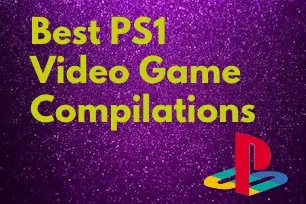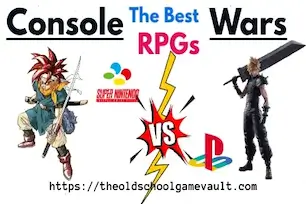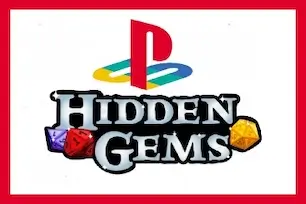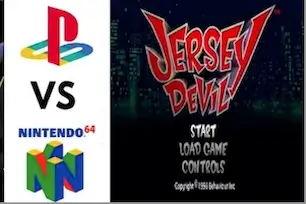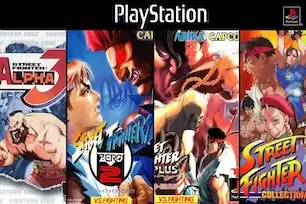Are you wondering what “Black Label” means in video games? You’re not alone.
It can get confusing when a single game is released under multiple labels. You’ll often see comparisons like GameCube Player's Choice vs. Black Label or PS2 Black Label vs. Red Label, along with other variants like Greatest Hits, Platinum Hits, and more. But what do these different video game labels really mean for the content, collectability, or value of a game?
Technically speaking, these re-release labels don’t always mean the same thing. Each console generation handled its own branding differently—and sometimes inconsistently. Some re-releases include bonus content or patches, while others simply have new packaging and lower resale value.
TL;DR – Understanding Video Game Label Variants
- Label variants like Black Label, Greatest Hits, and Player’s Choice impact the value and collectability of video games.
- Some re-releases include bug fixes or added content, but others simply offer cheaper packaging.
- Collectors often pay more for first print versions, especially if they include original cover art, manuals, and discs.
Yes, we get it. That answer doesn’t clear up much. That’s exactly why we wrote this guide.
The Table of Contents
Below, we’ll break down the most common video game label variations across consoles—PlayStation, Xbox, Nintendo, Sega—so you know what matters and what doesn’t. Let’s dive in.
🕹️ PS1 Black Label vs. Green Label – What's the Difference?
In the world of retro game collecting, few debates are as passionate as the one over PS1 Black Label vs. Greatest Hits (Green Label) releases. Avid gamers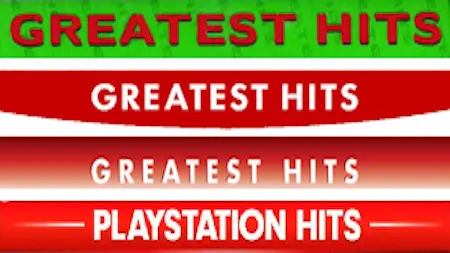 and collectors are well-versed in the distinction—but if you’re new to this, here’s the breakdown.
and collectors are well-versed in the distinction—but if you’re new to this, here’s the breakdown.
What Is a PS1 Black Label Game?
- A PS1 Black Label game refers to the original retail release of a title.
- The label features a sleek black spine and full-color artwork on the manual and disc. These versions were the first to hit store shelves and are considered more authentic by collectors.
What Is a PS1 Green Label (Greatest Hits) Game?
- The Green Label represents Sony’s “Greatest Hits” line, awarded to games that sold at least 150,000 copies.
- These re-releases came in packaging with a bright green banner and were sold at a budget price—typically $19.99 instead of the standard $24.99.
According to an IGN article on updated Greatest Hits titles, Sony's re-release program continued to expand as more PS2 games reached the sales threshold..
Differences Between Black Label and Greatest Hits Versions
- Packaging: Green label versions have a green spine and “Greatest Hits” banner on the cover.
- Manual: Greatest Hits versions usually include a black-and-white instruction manual, while Black Label versions came with full-color manuals.
- Game Content: Most titles are unchanged, but a handful of Greatest Hits versions feature:
- Bug fixes
- Control improvements
- Additional content or demos
- DualShock support (not present in original versions)
- Some marked as “Special Edition” (but not always clearly labeled)
Example: The Greatest Hits version of Resident Evil for PS1 included DualShock support, unlike the original release.
What Does This Mean for Collectors?
- Collectors typically prefer the Black Label for its aesthetic consistency, shelf appeal, and historical authenticity.
- Gamers on a budget often choose Greatest Hits versions to save money while still enjoying the full gameplay experience.
Learn how to tell real from fake with our comprehensive guide to counterfeit video games. Includes spotting tips for NES, SNES, GBA, and more!
Rarity Can Flip Expectations
- Interestingly, not all Greatest Hits versions are mass-produced.
- In rare cases, such as Final Fantasy VII, the Green Label version actually had fewer printings than the Black Label—making it rarer, though still less desirable among collectors.
🔴 PS2 Black Label vs. Red Label – Do the Differences Matter?
- When it comes to PS2 Greatest Hits games, Sony didn’t stray far from its original approach on the PlayStation 1.
- The biggest visual change? A new red label instead of the PS1’s iconic neon green. It’s still eye-catching—though many collectors feel it clashes with the otherwise sleek design of original releases.
What Is a PS2 Red Label (Greatest Hits) Game?
- The PS2 Red Label signifies a “Greatest Hits” re-release.
- These editions were awarded to PlayStation 2 games that surpassed significant sales milestones (usually 400,000+ units sold in the U.S.) and were re-released at a budget price point.

PS2 Greatest Hits vs. Black Label – Key Differences
- Packaging: Red spine with “Greatest Hits” banner on the cover and disc.
- Manual: Usually unchanged; still full-color like the original.
- Game Content: Identical in most cases—no added features, patches, or gameplay tweaks.
Sony’s Greatest Hits line began with the original PlayStation and expanded across later consoles like the PS2 and PS3, with qualifying titles re-released at discounted prices once certain sales milestones were met (source).
Note: The only visible difference for many PS2 re-releases is cosmetic.
What This Means for Collectors
- PS2 Black Label games are preferred by collectors for their clean, uniform presentation.
- Greatest Hits versions remain a budget-friendly option for gamers just looking to play.
💡 Tip: If you're looking to trade in PS2 games, note that Greatest Hits versions may have slightly lower resale value depending on the title.
🎮 Nintendo Player’s Choice vs. Nintendo Selects – The Reissue Pioneer
Believe it or not, collectors who bemoan Greatest Hits and Platinum Hits can blame Nintendo for starting the trend. Nintendo was the first major console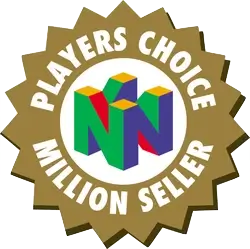 manufacturer to widely re-release successful games under a new branding label—and it began as far back as the Super Nintendo era.
manufacturer to widely re-release successful games under a new branding label—and it began as far back as the Super Nintendo era.
What Is “Player’s Choice”?
The Player’s Choice line began on the Super Nintendo, continued on the Nintendo 64, GameCube, and Game Boy Advance, and celebrated games that surpassed 1 million units sold. These re-releases featured:
- A “Player’s Choice” banner/logo on the cover
- Lower price point (often $19.99–$29.99 MSRP)
- No major changes to content or manuals, though minor bug fixes may exist
A wide variety of titles across platforms like GameCube, GBA, and SNES were re-released under Nintendo’s Player’s Choice branding, as documented in the MobyGames Player’s Choice list.
Discover how to identify NES label and seal variations like Oval, Round, and First-Print Seals of Quality. A must-read for serious collectors!
What Is “Nintendo Selects”?
In 2011, Nintendo retired the Player’s Choice name and introduced Nintendo Selects for newer systems like:
- Nintendo Wii
- Nintendo 3DS
- Wii U
The goal remained the same: reward high-performing titles with a budget-priced re-release. Packaging was updated to reflect the new branding, but game content remained virtually unchanged.
Player’s Choice vs. Nintendo Selects – Any Real Differences?
| Feature | Player’s Choice | Nintendo Selects |
|---|---|---|
| Start Year | 1996 (SNES) | 2011 (Wii/3DS) |
| Packaging Color | Varies: Yellow/Silver banner | Red-themed branding |
| Minimum Sales Requirement | 1 million copies | Variable (not always disclosed) |
| Content Changes | Mostly identical; rare bug fixes | Mostly identical; occasional tweaks |
| Collectability | Preferred: Original Black Label | Viewed as budget reprint |
Tip: The most noticeable difference is the branding logo in the top corner—either “Player’s Choice” or “Nintendo Selects.”
What This Means for Collectors
- For Nintendo fans and collectors, original black-label releases (with no banner) remain the gold standard for authenticity and shelf appeal.

- However, both Player’s Choice and Nintendo Selects titles are a budget-friendly way to play classic games without breaking the bank.
- And while these versions typically don’t include bonus features, they are part of Nintendo’s legacy of re-release branding—a practice that helped define modern game publishing strategies.
🪩 Xbox Original vs. Platinum Hits – Silver-Labeled Controversy
For the original Xbox, Microsoft branded its “Greatest Hits” line as Platinum Hits—a silver-banded packaging variant used to denote high-selling games. Like Sony’s and Sega’s re-release labels, Platinum Hits titles are often debated among collectors, mostly for cosmetic reasons.
What Is a Platinum Hits Xbox Game?
A Platinum Hits title means the game sold more than 350,000 units and had been on the market for at least 9 months. These re-releases came with:
- Silver packaging with “Platinum Hits” branding
- Grayscale or platinum-themed disc artwork
- Discounted MSRP
💡 Visual Tip: Many collectors dislike the mismatched silver packaging next to original Xbox artwork.
In community discussions like this Reddit thread on Platinum Hits differences, collectors and players note that while most versions are functionally identical, some Platinum Hits releases may include patches, slight performance improvements, or bundled updates—though this varies by title.
Explore the strange world of Blockbuster-exclusive titles and why some of them have become rare, valuable, and highly collectible today.
Are There Any Content Differences?
Yes, in some cases. While many Platinum Hits versions are identical to the originals, some include bonus content:
- Bug fixes or patches
- Updated manuals
- Bonus features or second discs
Example: The Platinum Hits edition of Mass Effect includes a second DVD with developer commentary and special features—missing from the original release.
What This Means for Collectors
- Collectors: Prefer original black-label versions for shelf appeal and uniformity.
- Gamers: Appreciate Platinum Hits for affordability—and sometimes extra content.
Because a few Platinum Hits editions include exclusive features, it's always smart to double-check content details before you buy or sell.
🏆 Game of the Year Editions – What Makes Them Worthwhile?
- Some games that earn top accolades from leading gaming publications or industry awards are re-released under a “Game of the Year” (GotY) label.
- These special editions appear across multiple platforms and are sometimes branded as “Ultimate” Editions or “Complete” Editions.
- And truthfully, “Ultimate” is an appropriate name—because these versions are often loaded with value.
📦 What’s Included in Game of the Year Editions?
Most GotY editions include:
- The full base game
- All or most of the DLC (downloadable content) released post-launch
- Sometimes include bonus art, commentary, maps, or updated patches
In contrast, buying the original game and each DLC separately almost always costs more.
The Very Significant GotY Difference 
- Let’s take Star Wars Battlefront as an example. At launch, the game looked visually stunning and earned positive attention. But over time, players realized that the core experience felt limited without its extensive DLC add-ons.
- To keep up, early adopters had to purchase multiple DLC packs or a costly season pass. Meanwhile, players who waited 9–12 months could simply buy the Game of the Year edition—which bundled in all that content at a significantly lower price.
- So in essence, GotY editions often provide better long-term value and a more complete gameplay experience for those patient enough to wait.
What This Means for Buyers and Collectors
From a collector’s standpoint, Game of the Year editions are a mixed bag:
- Collectors often prefer the original black-label release for consistency and nostalgia.
- However, gamers seeking maximum content and gameplay usually favor GotY versions.
Whether you're collecting or just playing, it's always wise to check which version you're buying—because GotY editions often change the value, gameplay, and packaging in meaningful ways.
🧾 TL;DR – Quick Comparison of Game Label Versions
| Label Type | Platform(s) | Packaging Color | Content Differences | Collector Value |
|---|---|---|---|---|
| Black Label | PS1, PS2, GameCube, Xbox | Original artwork; no banner | Original version; full-color manual | 🏆 Most desirable |
| Greatest Hits | PS1, PS2, PS3 | Green or red banner on case | Usually same; some include bug fixes or DualShock support | ⬇️ Slightly lower |
| Player’s Choice | SNES, N64, GameCube, GBA | Yellow or silver badge | Nearly identical; occasional minor fixes | ⬇️ Slightly lower |
| Nintendo Selects | Wii, 3DS, Wii U | Red-themed packaging | Same game; no major changes | ⬇️ Lower than original |
| Platinum Hits | Xbox, Xbox 360 | Silver case & disc | Some include patches or DLC | ⬇️ Budget-tier for players |
| Game of the Year | Multiplatform | Special edition or GotY branding | Includes DLC, bonus content, patches | 🎮 Best value for gameplay |

🧐 Frequently Asked Questions
PS2 Greatest Hits differences
- Greatest Hits versions have a red label and may have slightly lower resale value.
What is Black Label PS2 Games
- These are the original retail releases with black spines and no Greatest Hits branding.
What is Greatest Hits PS2 Games
- Re-released versions of popular games sold at a budget price with red-labeled packaging.
What does Player’s Choice mean
- It’s Nintendo’s re-release line for games that sold over 1 million copies.
What is Nintendo Selects vs Original
- Nintendo Selects are budget re-releases with red branding; originals have no banner.
Are Nintendo Selects cheaper?
- Yes, they are usually priced lower than original releases.
What is Xbox Platinum Hits
- Microsoft’s budget re-release line for best-selling Xbox games with silver packaging.
What GOTY means
- Game of the Year editions bundle the base game with most or all DLC.
Can DLC win GOTY
- No, Game of the Year awards go to full games, not standalone DLC.
📦 Keep This Guide to the Different Release Labels of Video Games
At the end of the day, video game re-releases—whether labeled Black Label, Greatest Hits, Player’s Choice, Platinum Hits, Sega All Stars, or Game of the Year—serve an important purpose: making great games more affordable and accessible to a wider audience.
Sometimes these versions even include bonus content, bug fixes, or enhanced compatibility. But does that make them better or worse than the original printing? Honestly, that’s up to you as a gamer or collector.
- If you value shelf appeal and first-print nostalgia, original releases might be your go-to. If you want the most content for your money, re-releases might actually be the smarter buy.
- One thing’s for sure—at The Old School Game Vault, we buy them all. Whether you have a first-edition black label, a red-labeled Greatest Hits, or a Game of the Year re-release, we’ll offer you a fast, fair quote for your collection.
Click here to learn how to sell your video games online with The Old School Game Vault—no matter the label.




